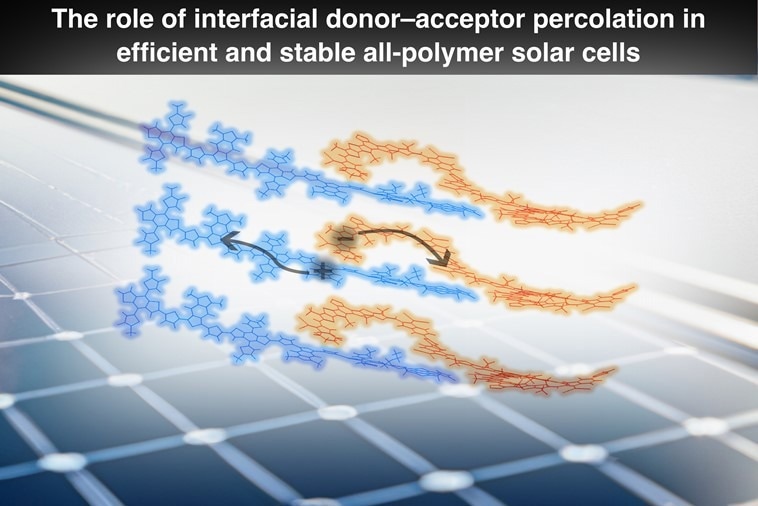An international group of scientists from the University of Hong Kong (HKU) has developed a new method to improve the efficiency and stability of organic solar cells, paving the way for integrating solar technology into everyday objects like clothing and buildings. The study published in Nature Communications focuses on controlling the arrangement of molecules within the solar cell to improve electricity generation and lifespan.

Discovering the mechanism for efficient electron-hole separation and morphology stabilization in state-of-the-art organic photovoltaic materials. Image Credit: The University of Hong Kong
The study was led by Professor Philip C.Y. Chow from the Department of Mechanical Engineering.
Organic Photovoltaics (OPV) harnesses the power of inexpensive, printable, and eco-friendly polymer semiconductors, holding immense promise for generating renewable and sustainable energy. Yet, due to the inherent softness of polymers, extensive research has focused on developing OPV devices that deliver exceptional efficiency and long-term stability.
The research team's work has shed light on how to overcome this challenge. The team focused their research on a new type of electron-accepting molecule called Y6, which, when polymerized, has shown great promise in enabling efficient and stable OPV devices.
By investigating the ultrafast charge dynamics using femtosecond laser pulses, the researchers first discovered that controlling the degree of aggregation of the polymerized Y6 acceptors (Y6-PAs) plays a crucial role in promoting electricity generation.
The research team uncovered that Y6-PAs demonstrate greater miscibility with the donor polymer in comparison to similar small molecular acceptors. This level of increased miscibility enabled the creation of a nanoscale percolation network at the interface of the heterojunction, thereby averting the aggregation of Y6-PAs.
This nanoscale percolation not only increased the efficiency of charge generation but also significantly improved the stability of the polymer blend morphology, reducing the loss in device performance over time when exposed to solar illumination.
Our discovery opens up new possibilities for the development of efficient and stable polymer-based solar PV panels, paving the way for more sustainable and viable solar energy solutions that can be seamlessly integrated into our environment, including buildings, vehicles, electronic products, and even clothes.
Philip C.Y. Chow, Professor, Department of Mechanical Engineering, The University of Hong Kong (HKU)
The study was a collaborative effort involving Professor Harald Ade's team from North Carolina State University in the USA, Professor Yuanping Yi's team from the Institute of Chemistry, Chinese Academy of Science, and Professor Hin-Lap Yip's team from the City University of Hong Kong.
This interdisciplinary collaboration facilitated the integration of expertise from various research groups, encompassing ultrafast optical spectroscopy, quantum chemical modeling, synchrotron X-Ray scattering, and solar cell device manufacturing. Dr. Zhen Wang, a Post-doctoral Fellow in Prof Chow's team at HKU, was the first author of this study.
Journal Reference:
Wang, Z., et al. (2024) The role of interfacial donor-acceptor percolation in efficient and stable all-polymer solar cells. Nature Communications. doi.org/10.1038/s41467-024-45455-0
Source: https://www.hku.hk/